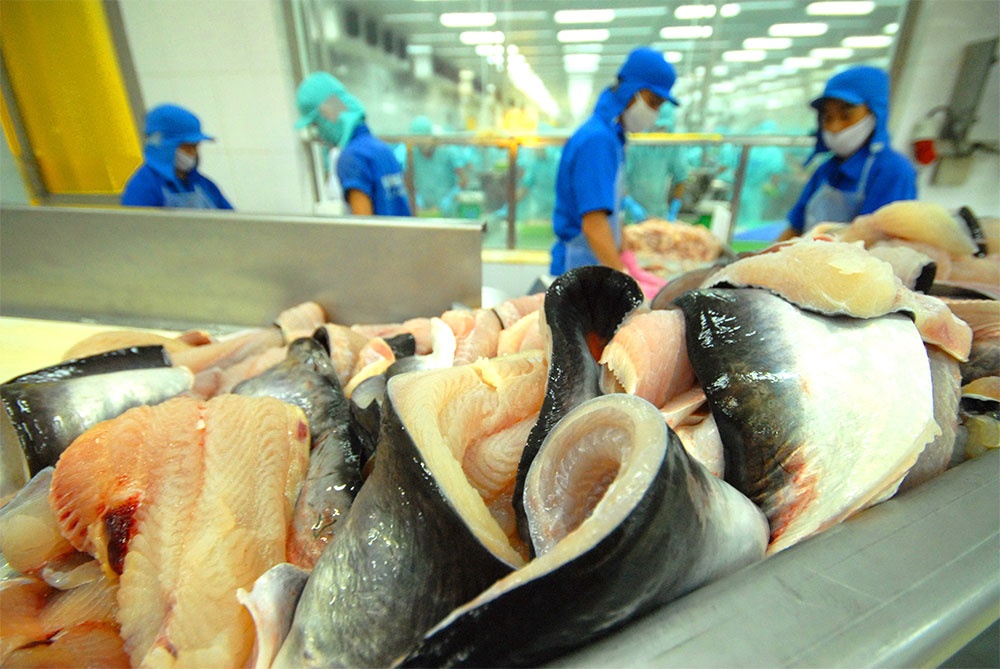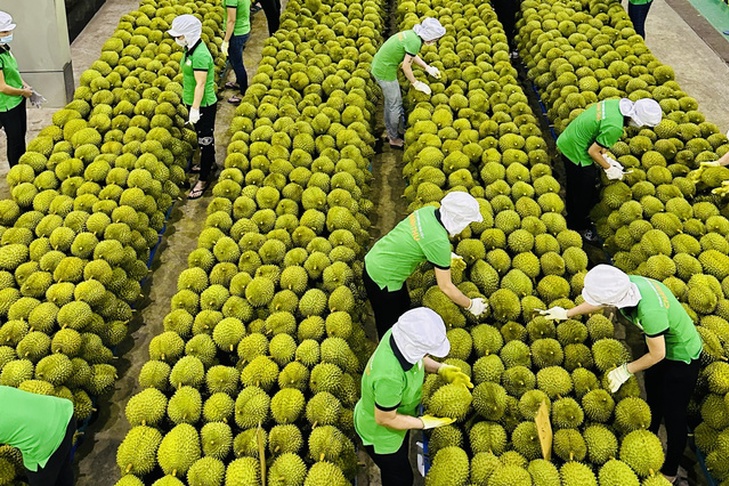Aquatic exports to Japanese market left to flounder
 |
| Aquatic exports to Japan from Vietnam are in decline, Photo: Le Toan |
Vietnam has seen a 14 per cent decline in turnover from seafood exports to Japan since the beginning of 2023, compared to the same period last year, according to the Vietnam Association of Seafood Exporters and Producers (VASEP). This decline comes after signs of recovery for the industry, which had turnover reaching $1.7 billion in 2022, up 29 per cent on the previous year.
Deputy secretary general of the VASEP Nguyen Hoai Nam outlined the market’s current woes at a seminar on exporting seafood to Japan on September 29. “Vietnam’s seafood exports have been experiencing hardships since the very start of the year until now,” Nam said.
Japan is the third-biggest marine import market for Vietnam, after the United States and China, and the country’s imports have risen annually to satisfy the growing demand for seafood. The average Japanese individual consumes 128 grammes of seafood per day, compared to 106g in China and 94g in France. This rise in demand has made Japan more cautious about the safety of its seafood imports.
“The Japanese market has extremely stringent regulations regarding food hygiene and safety, with antibiotic residue standards being crucial. In accordance with Japan’s Food Sanitation Act, infringing quantities of goods will be incinerated or returned to the exporter. From then on, the level of quarantine will be increased and made more stringent for products of the same sort, not only for violating businesses but for all Vietnamese export businesses,” Nam said.
The Japanese government’s implementation of an EU-style system on illegal, unreported, and unregulated fishing (IUU), introduced in December 2022, has hit Vietnamese seafood companies targeting the Japanese market.
South Ha Tinh Sea Product Import and Import and Export JSC has seen orders fall 30 per cent compared to the same period last year. Its delivery of 230 tonnes of goods to Japan in the first nine months of 2023 amounts to only 56 per cent of their goal for the year, a problem conflated by the weakening of the yen, which is now at a record low of ¥148 per US dollar, along with inflation at 2.5 per cent higher than last year.
If Vietnamese exporters like South Ha Tinh meet JFS-C, a set of international food safety standards developed by the Japan Food Safety Management Association (JFSM), they may continue to export seafood to the Japanese market. At a recent seminar on September 29, JFSM secretariat Masanori Kotani acknowledged VinaCert as the first certification and inspection firm in Southeast Asia to meet the international food safety standard JFS-C,
Kotani asserted that Japan is putting more focus on food safety and that JFS-C is now recognised as the standard by the Global Food Safety Initiative. According to Kotani, if a company meets this standard, it is similar to being granted a passport, allowing products to be exported to the Japanese market and other countries with ease.
| The Vietnam-Japan Economic Partnership Agreement, which went into effect on October 1, 2009, has a substantial impact on bilateral trade between Vietnam and Japan. The two nations are members of three other FTAs, namely the Comprehensive and Progressive Agreement for Trans-Pacific Partnership, the Regional Comprehensive Economic Partnership, which took effect on January 1, 2022, and the ASEAN-Japan Comprehensive Economic Partnership Agreement. According to the VASEP, Vietnam’s turnover for worldwide seafood exports is projected to reach $862 million in September 2023, which is equivalent to the same period in 2022 and a minor increase of $16 million compared to August of this year. In the third quarter of 2023, seafood exports accumulated over $6.6 billion in turnover, a decline of 22 per cent from the same period. |
 | MARD targets $14 billion in agro-forestry-aquatic exports in Q2 The Ministry of Agriculture and Rural Development targets $14 billion in export turnover of the agro-forestry-acquatic sector in the second quarter of this year, an increase of 3 per cent on-year. |
What the stars mean:
★ Poor ★ ★ Promising ★★★ Good ★★★★ Very good ★★★★★ Exceptional
Related Contents
Latest News
More News
- Vietnam's top 500 value-creating enterprises announced (December 27, 2025 | 08:00)
- The PAN Group shaping a better future with ESG strategy (December 26, 2025 | 09:00)
- Masan Consumer officially lists on HSX, marking the next phase of value creation (December 25, 2025 | 13:20)
- MCH to become the largest consumer stock on VN-Index (December 24, 2025 | 11:05)
- Oil and gas firms post strong 2025 results (December 22, 2025 | 17:42)
- SABECO wins multiple international beer awards (December 22, 2025 | 17:41)
- UOB sees Vietnam growth easing in fourth quarter (December 22, 2025 | 17:39)
- First members of Danang International Finance Centre revealed (December 22, 2025 | 17:39)
- Human-centred governance seen as key to AI development (December 19, 2025 | 18:19)
- Top 10 notable events of Vietnam’s industry and trade sector in 2025 (December 19, 2025 | 14:00)

 Tag:
Tag:






















 Mobile Version
Mobile Version